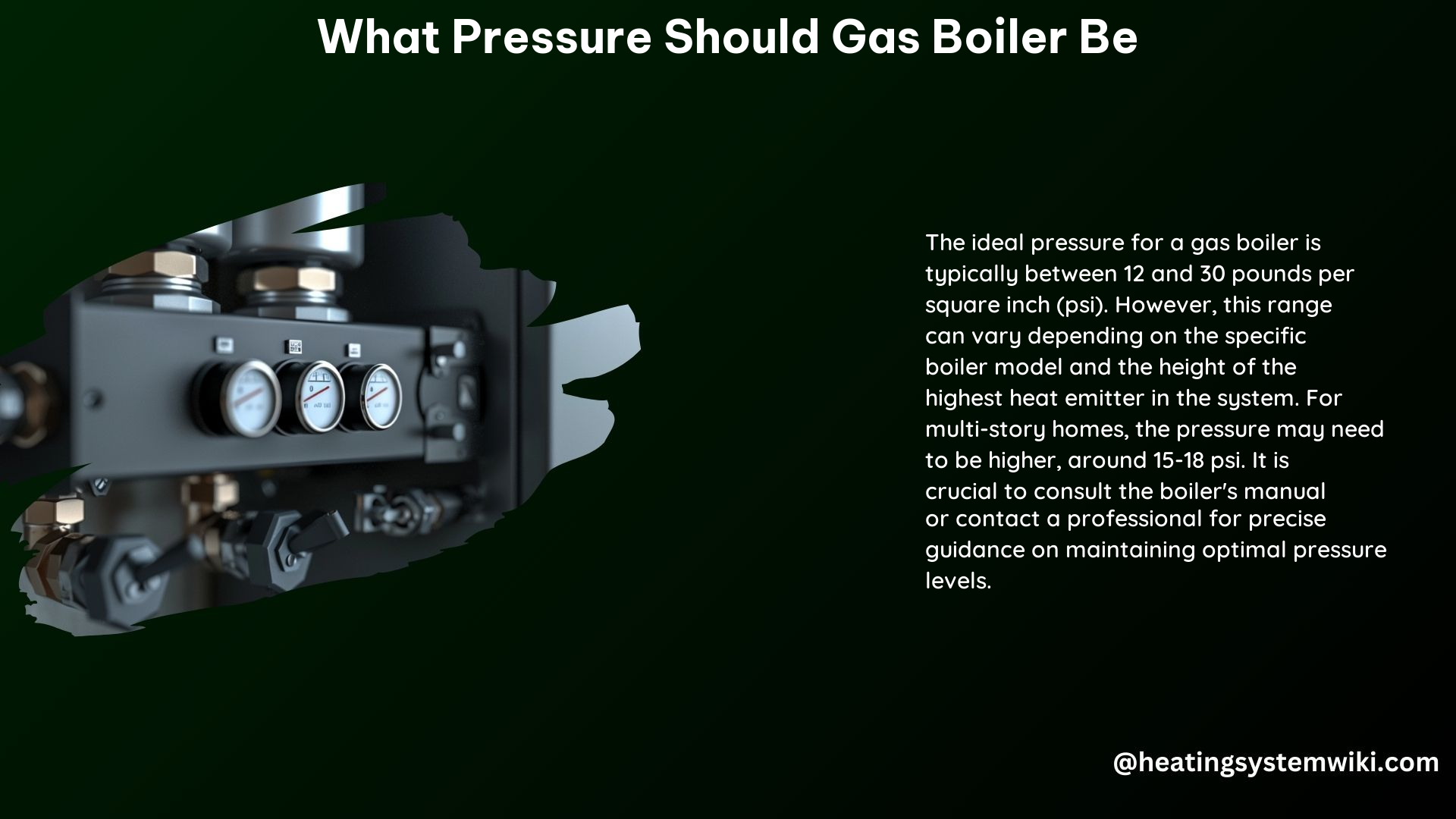The ideal pressure for a gas boiler is a crucial factor in ensuring its efficient and safe operation. This comprehensive guide will delve into the technical specifications, manufacturer’s recommendations, and DIY troubleshooting tips to help you maintain the optimal pressure for your gas boiler.
Standard Cold Pressure
The standard cold pressure of a gas boiler is typically around 12 pounds per square inch (psi). This is the pressure reading when the boiler is not in operation and the system is at room temperature. This baseline pressure is essential for the proper functioning of the boiler’s components, including the pressure relief valve and the expansion tank.
Normal Operating Pressure

During normal operation, the pressure within the gas boiler should increase to around 20 psi. This elevated pressure is necessary to circulate the heated water throughout the heating system and ensure the efficient transfer of heat to the radiators or other heat emitters. It’s important to note that this pressure range is still considered within the safe operating limits for most gas boilers.
Maximum Safe Pressure
Most gas boilers are designed to withstand a maximum safe pressure of around 30 psi. Beyond this point, the seals and other critical components of the boiler may begin to fail, leading to potential leaks, malfunctions, and even safety hazards. It’s crucial to never exceed the manufacturer’s recommended maximum pressure to avoid these issues.
Height-Related Pressure Adjustments
For heating systems with higher heat emitters, such as radiators or baseboard heaters, the boiler pressure may need to be adjusted accordingly. As a general rule, for every 28 inches (2.33 feet) of vertical distance between the boiler and the highest heat emitter, the pressure should be increased by approximately 1 psi. This adjustment ensures that the water can effectively circulate and reach the uppermost parts of the heating system.
Manufacturer’s Recommendations
While the general guidelines mentioned above provide a good starting point, it’s essential to always consult the manufacturer’s instructions for specific pressure recommendations. Different gas boiler models may have varying pressure limits and requirements based on their design, components, and intended use. Adhering to the manufacturer’s guidelines is crucial for maintaining the boiler’s warranty and ensuring its safe and efficient operation.
Technical Specifications
Boiler Pressure Gauge
The pressure gauge on a gas boiler typically comes with different markings and color-coded zones to indicate the optimal pressure range. The ideal pressure is often marked as a green zone on the gauge, with red zones indicating low or high pressure levels that should be avoided.
Pressure Relief Valves
Modern gas boilers are equipped with pressure relief valves, which are designed to automatically release excess pressure from the system. These valves are typically set to trip at around 30 psi, ensuring that the pressure does not exceed the maximum safe limit. When the pressure relief valve is activated, it releases steam or water to lower the pressure back to the normal operating range.
Annual Maintenance
Regular maintenance, including annual checks and inspections, is crucial for ensuring the optimal performance and safety of a gas boiler. During these maintenance visits, a qualified technician will inspect the boiler’s pressure, identify any issues, and make necessary adjustments to maintain the proper pressure levels.
DIY and Troubleshooting
Checking Boiler Pressure
The pressure gauge on a gas boiler is typically located on the front of the appliance or under the control panel. It’s recommended to check the pressure gauge regularly, at least once a month, to ensure the boiler is operating within the optimal pressure range.
Adjusting Pressure
If the boiler pressure is too high or too low, it may be necessary to adjust the pressure regulating valve. This valve is usually located near the boiler or in the plumbing system. However, it’s important to note that adjusting the pressure should be done with caution and, in some cases, may require the assistance of a qualified HVAC technician.
Leaks and Pressure Drops
If the boiler pressure is dropping rapidly, it may indicate a leak in the system. Look for signs of water leaks or damp patches around the boiler, as well as any visible cracks or damage to the pipes or fittings. Addressing these issues promptly is crucial to maintain the proper pressure and prevent further damage to the heating system.
Reference:
- https://forum.heatinghelp.com/discussion/164637/boiler-pressure-more-than-20-psi
- https://www.thermodirectinc.com/how-much-pressure-should-my-boiler-have/
- https://www.edfenergy.com/heating/advice/boiler-pressure-everything-you-need-know
- https://greenenergymech.com/correct-pressure-for-boiler/
- https://trusteyman.com/blog/what-your-boiler-pressure-should-be-when-its-heated/
